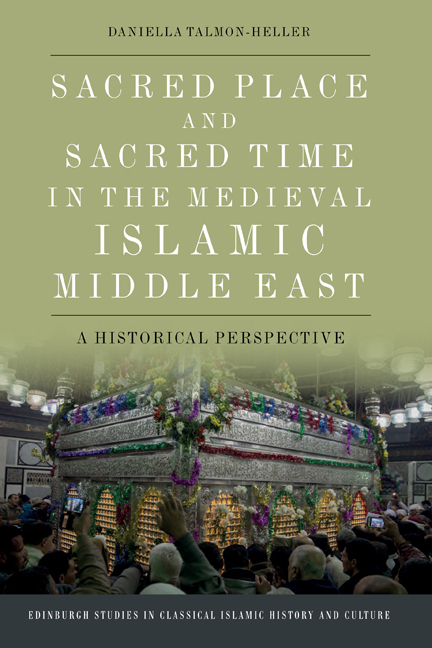Book contents
- Frontmatter
- Contents
- List of Figures
- Acknowledgements
- Map of the Middle East
- Introduction
- 1 Etic Concepts and Emic Terms
- 2 The State of the Art
- Part One A Sacred Place: The Shrine of al-Husayn’s Head
- Part Two A Sacred Time: The Month of Rajab
- Final Comments: Spacial and Temporal Sanctity
- Works Cited
- Index
Introduction
Published online by Cambridge University Press: 17 October 2020
- Frontmatter
- Contents
- List of Figures
- Acknowledgements
- Map of the Middle East
- Introduction
- 1 Etic Concepts and Emic Terms
- 2 The State of the Art
- Part One A Sacred Place: The Shrine of al-Husayn’s Head
- Part Two A Sacred Time: The Month of Rajab
- Final Comments: Spacial and Temporal Sanctity
- Works Cited
- Index
Summary
The number of months with God is twelve in accordance with God's decree on the day he created the heavens and the earth’, declares verse 9: 36 of the Qurʾan, subjugating time to its Lord, and adds: ‘four of them are sacred (ḥurum)’. While Ramadan is explicitly designated in the Qurʾan as the sacred month of the fast and an unspecified sacred month or ‘well-known months’ (Q. 2: 197) as the time of the hajj, the other sacred months remain unnamed. The Prophet's ‘farewell sermon (khuṭbat al-wadāʿ)’, which Muhammad purportedly delivered from atop his shecamel on his last hajj, reveals the names of those months. Filling in the lacuna in the Qurʾan, the Prophet explains: ‘The year is made up of twelve months, four of them are sacred, three of which are sequential – Dhu al-Qaʿda, Dhu al-Hijja and Muharram, and Rajab Mudar between Jumada and Shaʿban’.
Over the ages, Muslim jurists and Qurʾan exegetes have wrestled with the meaning of and relation between these passages. They all acknowledge that the pagan Arabs considered as sacred Dhu al-Qaʿda, Dhu al-Hijja, Muharram and Rajab (the eleventh, twelfth, first and seventh months), and that they marked their special status by abstention from warfare and the performance of various religious devotions.
With the transition to Islam and the abolishment of many customs of the Jāhiliyya, a new purely lunar, rather than lunisolar calendar was established, and two new annual festivals were instituted. Several years after the Prophet's death the year-count was also re-set: year one of the hijri era was declared by the caliph ʿUmar ibn al-Khattab to have begun on 1 Muharram (16 July) of 622 CE. Despite those dramatic transitions, at least some pre-Islamic notions concerning time's division into units, the differentiation between sacred and profane time, and the means for distinguishing between these realms were preserved.
The standing of the four holy months, Rajab included, was called into question under Islam, demonstrating that the classification into sacred and profane is specific to every faith-based community and an important means for distinguishing between them.
- Type
- Chapter
- Information
- Sacred Place and Sacred Time in the Medieval Islamic Middle EastA Historical Perspective, pp. 127 - 133Publisher: Edinburgh University PressPrint publication year: 2020



